SPONSORED POST: Crispy Rice with California Avocado and Tuna Tartare
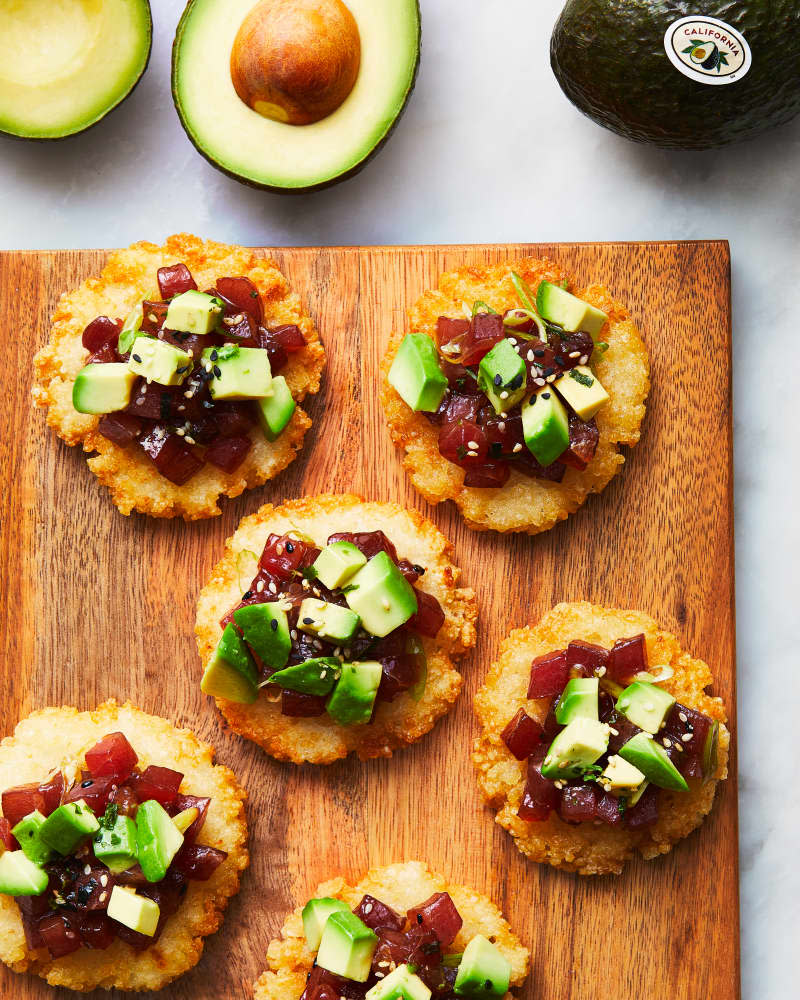
When you think of what makes California cuisine so special and delicious, two of the biggest features are high-quality seafood and fresh produce. One such combination, fresh tuna and sustainably grown California Avocado, magically becomes a vibrant, flavorful seafood tartare when tossed with some soy sauce and seasonings. Spoon it onto sushi rice that’s been pan-fried into crispy rice cakes and you get to enjoy a delicious, restaurant-quality appetizer.
Why You’ll Love It
There are lots of textures and flavors here: warm, crispy, creamy, and salty.
It’s an elegant but easy appetizer.
You can feel good about adding California Avocados, as they’re locally grown and sustainably farmed.
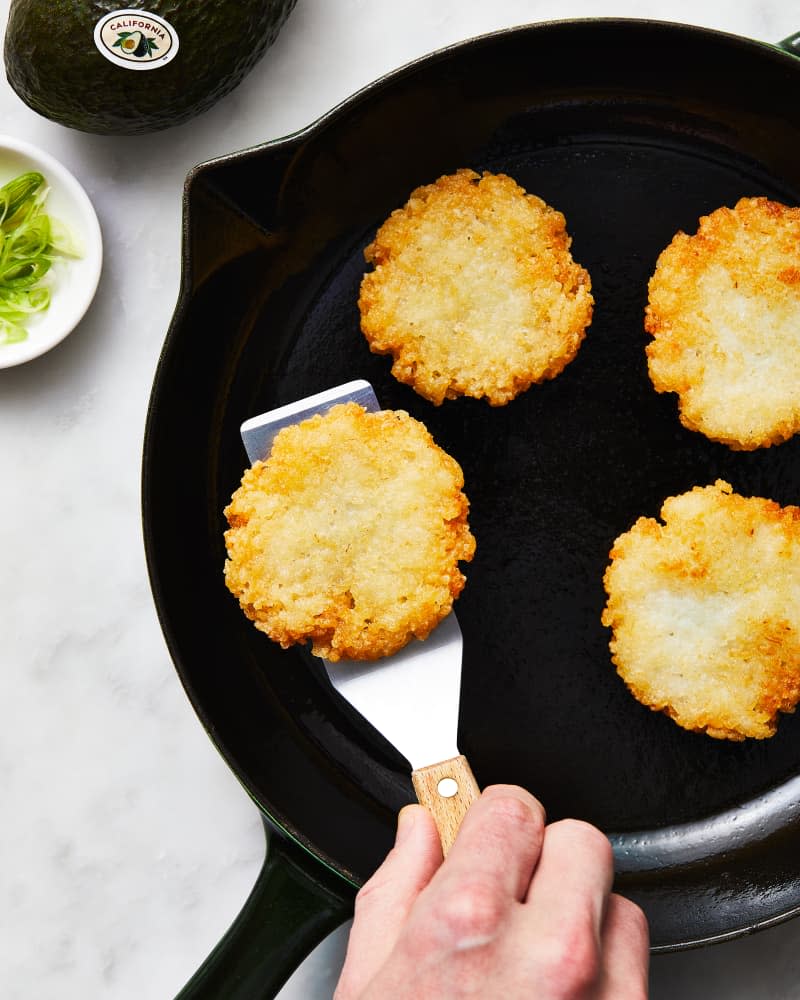
Key Ingredients in Crispy Rice with California Avocado and Tuna Tartare
California Avocado: Diced avocado adds a delicious buttery flavor and creamy texture. Use a fresh, in-season California Avocado that’s ripe but still firm so you can easily dice.
Raw tuna: Since the tuna is eaten raw, buy it from a reputable source and make sure it is sashimi or sushi-grade tuna. Buy it no more than a day before you plan to use it.
Sushi rice: Cooked sushi rice is the base of the rice cakes and using it warm makes it easier to form the rice cakes. Don’t use cold sushi rice.
Soy sauce: This is the main flavoring in the tartare. If you want to make this dish gluten-free, opt for tamari instead.
The assembled bites are finished with a sprinkling of furikake, which is a Japanese seasoning mixture that often contains seaweed, sesame seeds, bonito flakes, and chili flakes. Another fun topping option is chili crisp if you want some spice and crunchy bits.
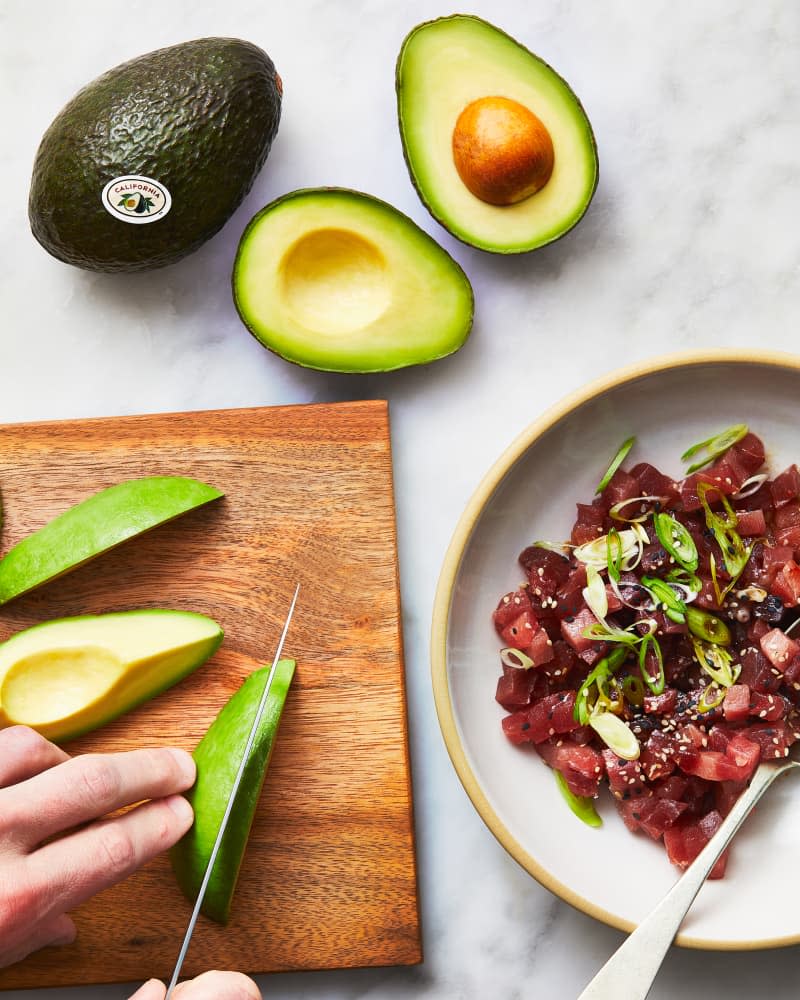
How Do You Choose a Ripe Avocado?
Choosing a good avocado starts at the store. Look for ones with a “California” sticker — they come from farmers who grow them using responsible and environmentally sustainable growing practices. Keep an eye out for California Avocados when they’re in season in the spring and summer.
Next comes figuring out when the avocado is ready to eat. A ripe but still firm avocado is the best one to use in this recipe since you want one that has good buttery flavor but still holds its shape when diced. The best way to tell when an avocado is ripe is to hold it in the palm of your hand and give it a gentle squeeze. A ripe avocado should yield to this pressure but still be a bit firm. Don’t use rock-hard avocados or ones that feel mushy. If the avocado feels ripe but you’re not ready to use it yet, place it in the refrigerator.
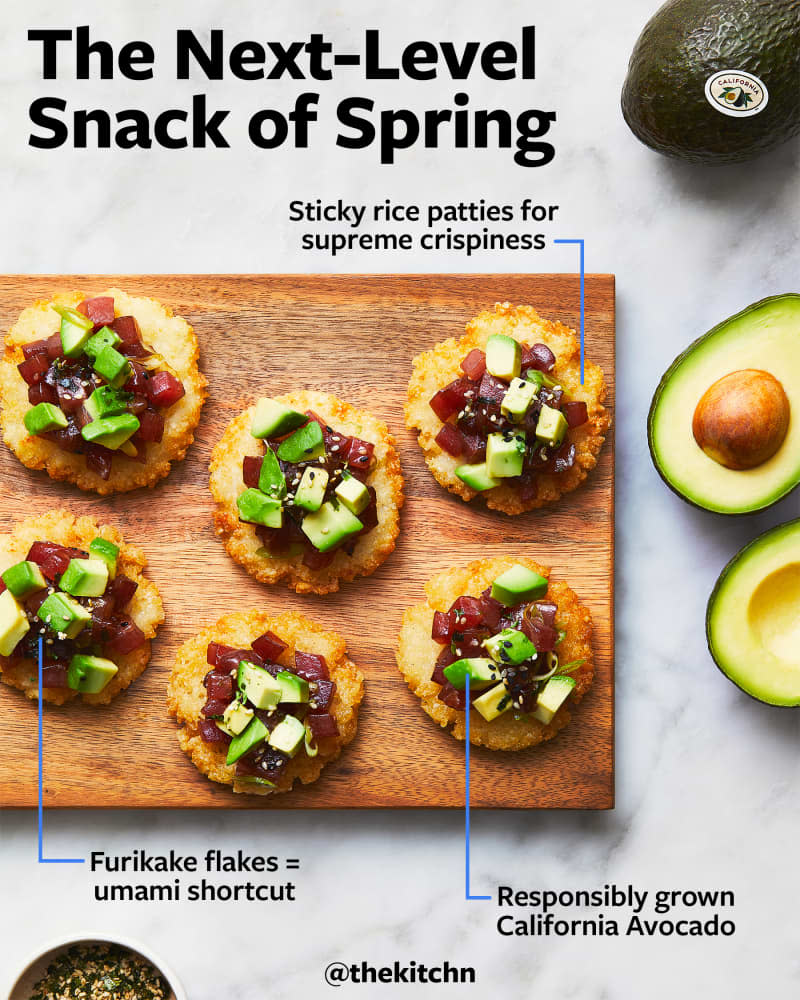
How to Make Crispy Rice with California Avocado and Tuna Tartare
Form the rice cakes. Toss still-warm sushi rice with flour and salt. Shape into little rice cakes, using damp hands to keep the rice from sticking to them.
Peel the avocado to get the most from your fruit. Halve, remove the seed, and carefully peel off the skin to reveal beautiful green avocado for dicing.
Make the tartare. Stir diced raw tuna together with seasonings, then fold in cubes of ripe fresh California Avocado.
Fry the rice cakes and assemble. Fry the rice cakes until golden brown and crispy. Top with the tartare and a sprinkling of furikake and serve while the rice cakes are still warm.
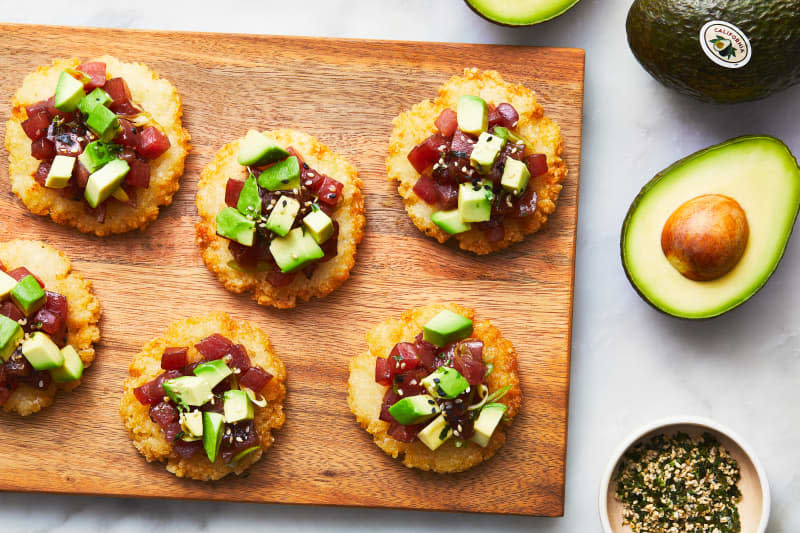
Crispy Rice with California Avocado and Tuna Tartare Recipe
It's fancy but easy and uses fresh-from-California ingredients.
Prep time 30 minutes
Cook time 25 minutes
Makes 14 to 16
Serves 6 to 8
Ingredients
For the crispy rice:
4 cups warm cooked sushi rice (see Recipe Note)
2 tablespoons cornstarch or all-purpose flour
1/2 teaspoon kosher salt
1/2 cup vegetable or canola oil, divided
For the avocado and tuna tartare:
6 ounces raw sashimi-grade tuna
1 medium scallion
1 tablespoon plus 1 teaspoon tamari or soy sauce, plus more as needed
2 teaspoons toasted sesame oil
1 teaspoon honey
1 teaspoon white or black sesame seeds, or a combination
1 pinch red flakes pepper or shichimi togarashi (optional)
1 ripe, but firm large fresh California Avocado (6 to 8 ounces)
Furikake, for sprinkling
Instructions
Form the rice cakes:
Spread 4 cups warm cooked sushi rice across the bottom of a large bowl. Sprinkle with 2 tablespoons cornstarch or all-purpose flour and 1/2 teaspoon kosher salt. Using a rice paddle or wet hands, fold and fluff the mixture until the grains or rice are coated and there is no loose flour or cornstarch.
Prepare a small bowl of water. Scoop the rice mixture out in 1/4 loosely packed cup portions (14 to 16), wetting your hands as needed with the water if the rice is sticky or not sticking together. Working one portion at a time, form and press into a tight ball. Press the ball into a rough 2 1/2- to 3-inch-wide, 1/2-inch-thick disk. Press the sides of the disk to smooth the edges. Place on a baking sheet.
Make the avocado and tuna tartare:
Cut 6 ounces raw tuna into small dice (about 1 cup). Thinly slice 1 medium scallion. Place both in a medium bowl. Add 1 tablespoon plus 1 teaspoon tamari or soy sauce, 2 teaspoons toasted sesame oil, 1 teaspoon honey, 1 teaspoon sesame seeds, and 1 pinch red flakes pepper or shichimi togarashi if desired. Toss to combine.
Halve, seed, peel, and cut 1 large California Avocado into small dice. Add to the bowl of tuna and gently toss to combine. Taste and season with more tamari or soy sauce as needed. Refrigerate while you cook the crispy rice.
Make the crispy rice and assemble:
Heat 1/4 cup of the vegetable oil in a large (12-inch) nonstick or cast iron skillet over medium heat until shimmering. Swirl the pan so the oil evenly coats the bottom. Add half of the rice cakes. Cook, sliding the rice cakes around as needed so they come in contact with the oil, until light golden-brown, about 5 minutes per side.
Return the rice cakes to the baking sheet. Add the remaining 1/4 cup vegetable oil to the pan and swirl again. Repeat cooking the remaining rice cakes and return them to the baking sheet.
Divide the avocado and tuna tartare evenly over the rice cakes (heaping 1 tablespoon each). Top with a generous sprinkle of furikake.
Recipe Notes
How to make sushi rice: Place 1 1/3 cups sushi rice in a fine-mesh strainer and rinse under cold water for a minute to get rid of some of the milky starch. Drain well. Place the rice and 1 1/2 cups water in a medium saucepan and bring to a boil over medium-high heat. Cover and cook on low heat until the rice is tender, about 15 minutes. Remove from the heat and let steam, covered, for 10 minutes. (Alternatively, place the rinsed rice and water in a rice cooker and cook according to manufacturer’s instructions.)
Storage: Leftover rice cakes and tuna tartare can be refrigerated in separate airtight containers for up to 1 day.

